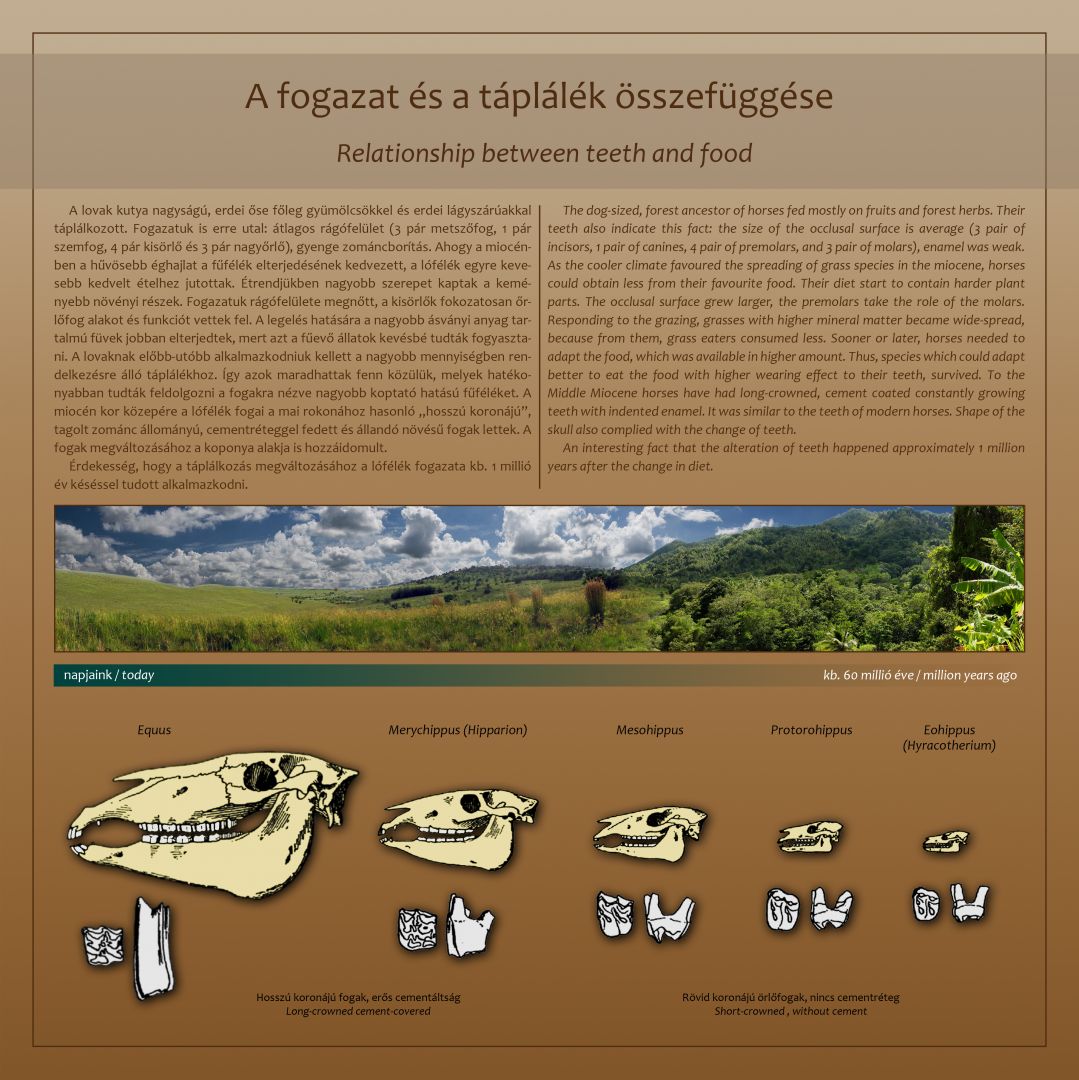MIOCENE FAUNA - 2. view
Relationship between teeth and food
The dog-sized, forest ancestor of horses fed mostly on fruits and forest herbs. Their teeth also indicate this fact: the size of the occlusal surface is average (3 pair of incisors, 1 pair of canines, 4 pair of premolars, and 3 pair of molars), enamel was weak. As the cooler climate favoured the spreading of grass species in the miocene, horses could obtain less from their favourite food. Their diet start to contain harder plant parts. The occlusal surface grew larger, the premolars take the role of the molars. Responding to the grazing, grasses with higher mineral matter became wide-spread, because from them, grass eaters consumed less. Sooner or later, horses needed to adapt the food, which was available in higher amount. Thus, species which could adapt better to eat the food with higher wearing effect to their teeth, survived. To the Middle Miocene horses have had long-crowned, cement coated constantly growing teeth with indented enamel. It was similar to the teeth of modern horses. Shape of the skull also complied with the change of teeth.
An interesting fact that the alteration of teeth happened approximately 1 million years after the change in diet.
